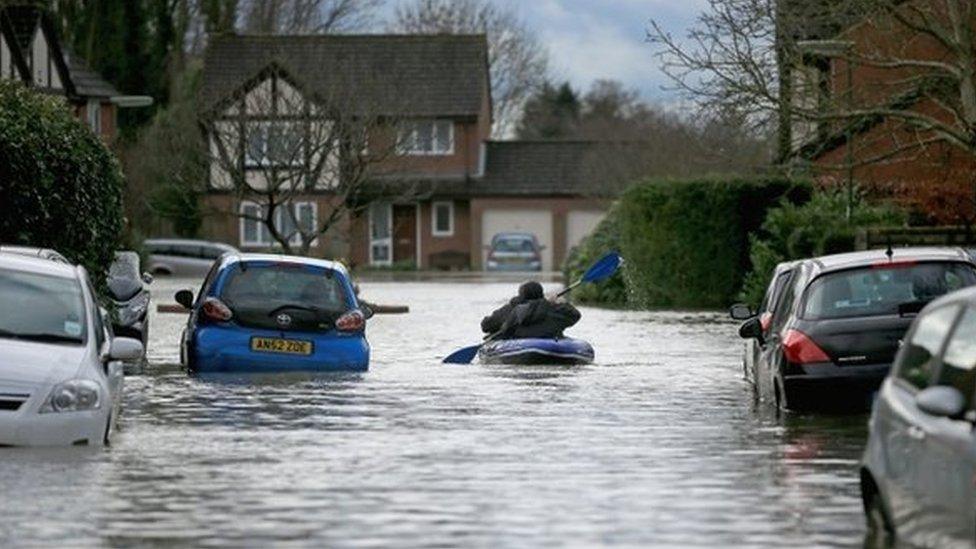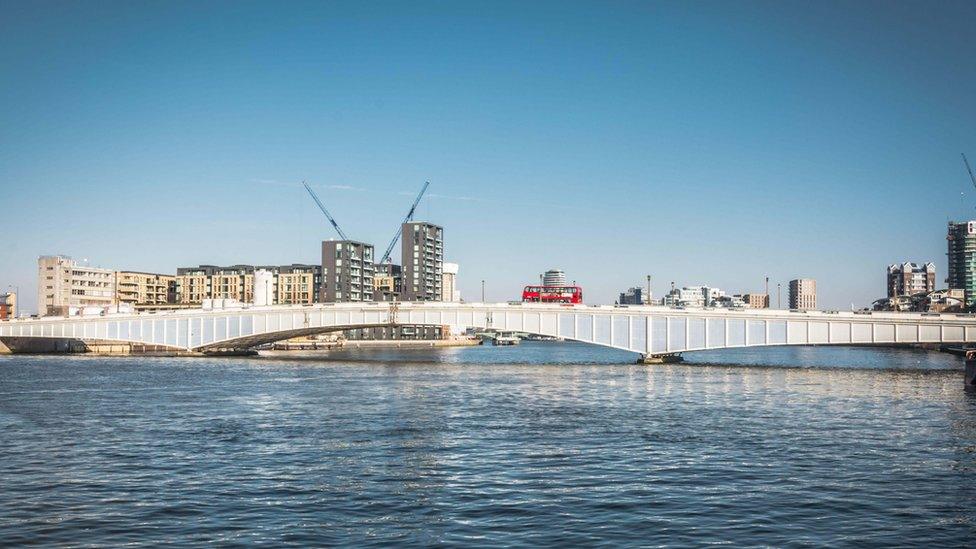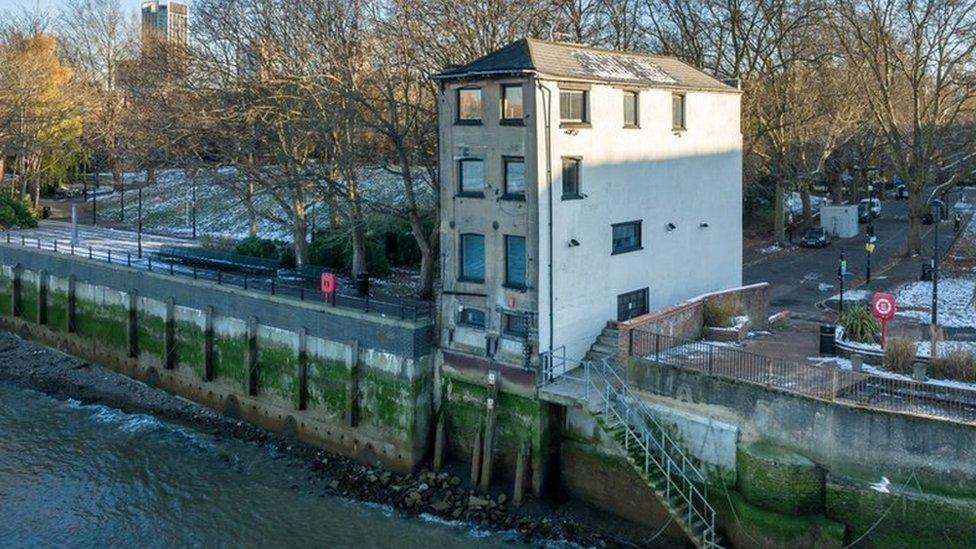Thames flood defences must be raised sooner, says Environment Agency
- Published

Thousands of homes were flooded when the Thames burst its banks in 2014
Tidal flood defences must be raised 15 years earlier than expected as sea levels rise, the Environment Agency says.
An updated plan is designed to ensures communities in London and the wider Thames Estuary are ready to adapt to the impact of climate change.
It sets out how it will protect more than 1.4 million people and £321 billion of property from tidal floods.
The plan says defences must be raised upstream of the Thames Barrier by 2050.
The Environment Agency has assured Londoners that the Thames Barrier continues to operate reliably and effectively as part of the wider flood defence system.
It expects the barrier to continue to protect London until 2070.
However, to further protect the capital it has committed to deciding an end-of-century option by 2040.
The plan also calls for riverside strategies to be embedded into local planning frameworks by 2030 to ensure that new developments factor in future flood defence requirements.
'Essential we act now'
Julie Foley, the Environment Agency's FCRM Strategy & National Adaptation Director, said: "Sea levels are rising at an accelerated rate across the Thames Estuary, and it is therefore essential that we act now to respond to the changing climate.
"Our updated plan recognises that defence raising needs to start earlier than originally thought - by some 15 years.
"Alongside, the plan also requires greater investment in habitats and natural flood management to support nature recovery.
"We cannot deliver the ambitions of the updated Thames Estuary 2100 Plan on our own.
"That is why we will continue to work with many partners to deliver a green and resilient estuary."
Last summer over 1,000 properties across London were severely flooded during intense storms.
A report found that Thames Water was slow to respond to the floods because it had struggled to understand what caused them and their impact.
It added that the company did not plan for the storms properly, gave customers unclear messages about what to do, and failed to update local councillors and MPs about what was happening.

Follow BBC London on Facebook, external, Twitter , externaland Instagram, external. Send your story ideas to hellobbclondon@bbc.co.uk, external
Related topics
- Published14 May 2023

- Published3 March 2023

- Published22 October 2019

- Published25 January 2022
